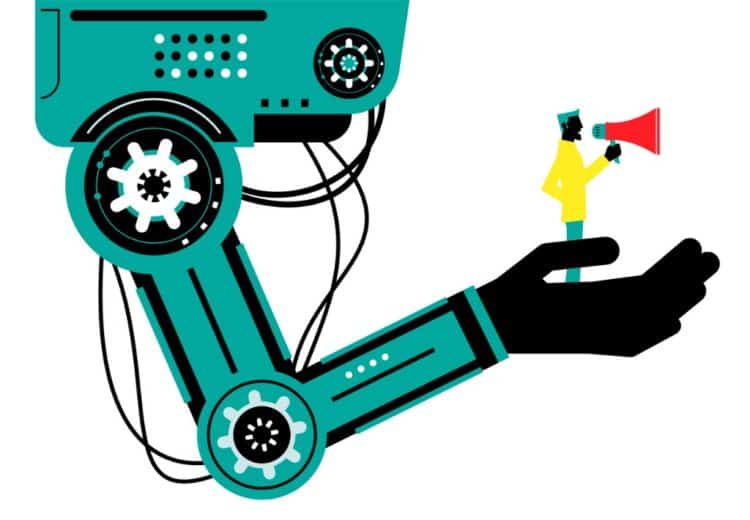While RPA could save 25,000 work hours of per year at a cost of US$878,000 for an organization with 40 full-time accounting staffers according to Gartner, there’re roadblocks to the technology’s adoption.
The top three roadblocks include a hesitancy to remove human judgment from the process, perception of low ROI, and process standardization delays before implementation, the advisory firm pointed out.
In addition to these, RPA tools have limitations as well. For instance, RPA tools need retraining when organizations introduce even small changes to data formats or a process.
What could make RPA deployment easier for organizations? And what CFOs need to understand before RPA adoption? Adrian Jones (pictured), executive vice president, Asia Pacific & Japan, Automation Anywhere shared with FutureCFO his insights into these issues with FutureCFO recently.
FutureCFO: There’s much talk about benefits brought by RPA tools, but RPA has limitations as well. They need retraining when you make a slight change to the interface of an application or data formats.
As static application interface, unchanged processes and stable data formats are increasingly rare in today’s dynamic digital environment, how can CFOs prepare to work with RPA’s limitations?
Adrian Jones (AJ): CFOs today are no longer only responsible for the management of their organization’s financial risks, or matters relating to the finance operations. They are increasingly involved in co-driving corporate strategies together with the rest of the executive leadership through the planning of both financial and non-financial resources.
With data now as the underlying infrastructural layer of technological deployments, CFOs realize the need to navigate real-time changes and unpredictabilities that may arise. These could stem from every other technology solution that is deployed within the organization, not just RPA deployments.
The finance function needs to be well-equipped to handle these changes in real-time. They also need to ensure impacts of technological limitations are minimized by ensuring its agility, transparency, standardization, and technical competency.
They also need to understand the limitations of RPA and how to navigate this—traditional RPA only handles structured data—data in a database or electronic spreadsheets.
But most data that finance works with today fall under semi-structured data, coming in various formats where data cannot be easily pulled.
We try to help companies navigate this by ensuring a seamless approach to end-to-end process automation, which is enabled by the automation of cognitive tasks with cognitive automation tools that uses a combination of computer vision, optical character recognition (OCR), automatic document analysis, fuzzy logic, and machine learning (ML) to autonomously process documents and extract the required information.
When it comes to RPA retraining, there are also solutions such as intelligent task recorders and visualisation tools that enable automation and deployment of new tasks within minutes.
FutureCFO: Vendors such as Automation Anywhere adds AI (cognitive capabilities) to its offering. How would this make things easier for finance functions when using RPA?
AJ: We’ve solutions that combines AI, machine learning and RPA. Through AI, a solution can optimize processes based on the analyses of data supplied, resulting in smarter decision making and faster processes.
Unlike usual software bots that are process-centric, solutions equipped with AI capabilities are human-centric. They are designed to work alongside employees to make them more successful at their roles and in solving business problems, by improving consistency, quality, and overcoming systems disparities in real-time.
There is a finance team that has deployed our Digital Workers—equipped with skills corresponding to human jobs and responsibilities and are different from bots—across a myriad of functions, including FP&A, regulatory and management reporting, and account and bank reconciliations.

FutureCFO: When it comes to AI, clean data are required to train tools to work properly. What’s your advice to CFOs in terms of data quality?
AJ: Most businesses struggle with data quality, especially if they are still heavily reliant on legacy applications. Data quality usually gets compromised as data edits are made to conform to new formats to facilitate data sharing. RPA comes in useful in this regard, to clean and reconcile data. With their cognitive abilities, bots can when trained, to use human-centric logic to identify data discrepancies. Eventually, these become rules that are added for future use, resulting in a continuous cycle of improving the process of automation.
Beyond data preparation and processes through RPA and ensuring data management tools are in place, CFOs should look to encourage higher levels of data accountability and employee diligence.
In addition, formalizing or improving existing data governance systems will help reinforce the importance of keeping data transparency as the top priority and ensure that organizational members are accountable for the data they use and produce.
FutureCFO: Can you share with us some actionable insights and best practices for CFOs who are mulling RPA deployment?
AJ: RPA needs to be prioritized because it’ll be vital to unlocking the potential of digital transformation in the workplace.
Employees have a more productive and empowering environment as they work alongside bots. By transferring lower-skilled tasks to machines, they can concentrate on high-value and creative tasks, with their work becoming more human in the process.
It’s also crucial that CFOs ensure RPA deployments are measured effectively and accurately. This means that performance is defined beyond short-term gains to the bottom line, and accounts for its impact on the business’ tactical and strategic goals.




